-

Nov
13
Interpretive Summary: Assessment of dietary spirulina supplementation on growth performance, nutrient digestibility, and intestinal health in lipopolysaccharide-challenged weanling pigs

Weanling pigs are highly susceptible to intestinal health challenges caused by harmful bacterial agents, which can trigger inflammation and weaken intestinal epithelial integrity. However, research on the potential benefits of dietary spirulina as a bioactive feed additive for improving gut health in weanling pigs remains limited.
Read more
-

Nov
13
Interpretive Summary: Variability in cognitive strategies in a numerical discrimination task: individual and comparative insights from day-old domestic chicks (Gallus gallus)

Numerical abilities play a fundamental role in survival by enabling animals to assess resources and make adaptive decisions. Among these, numerical discrimination, the capability to distinguish between larger and smaller numerosities, is highly studied. Numerical discrimination can be solved using two strategies: the absolute, selecting a specific numerosity, or the relative, identifying the larger or smaller one.
Read more
-

Nov
13
Interpretive Summary: Genomic study for pregnancy loss in Brahman cattle
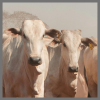
Pregnancy loss (PL) is a major contributor to reproductive inefficiency in beef cattle operations and carries significant economic implications for producers. Although management and environmental factors are known to influence pregnancy maintenance, the genetic factors contributing to PL remain poorly understood, particularly in Bos indicus-influenced breeds.
Read more
-

Nov
06
Interpretive Summary: Impact of dietary supplementation of beef cows with rumen-protected methionine during the periconceptional period on post-weaning performance of female offspring
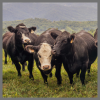
This study examined the effects of supplementing rumen-protected methionine (RP-Met) during the periconceptional period on post-weaning traits of female offspring. A total of 114 beef cows were randomly assigned to a control (CON; no RP-Met) and RP-Met treatment.
Read more
-

Nov
06
Interpretive Summary: Optimizing the performance of large genomic evaluations through data truncation in Angus cattle
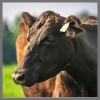
Recent advances in animal breeding and genetics have made it possible to combine records, genotypes, and pedigree into a single input for predicting breeding values, making genomic evaluations easier and more efficient. However, large genomic models remain computationally expensive.
Read more
-

Nov
06
Interpretive Summary: The effect of Methylococcus capsulatus in mono- or co-culture with Methanobrevibacter smithii or with mixed rumen fluid on bacterial growth and methane gas production
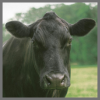
This study investigated the impact of Methylococcus capsulatus, mixed with or without purified bacterial strains or mixed rumen fluid, on feeding grass-based and/or grain-based diet rations, as well as changes in bacterial cells, rumen fermentation rates, gas production, and rumen microbiota in in vitro and continuous culture. Three experiments were carried out using in vitro ANKUM gas production systems (Exp. 1 and 2) and continuous recirculating flux chamber systems (Exp. 3).
Read more
-

Nov
06
Interpretive Summary: Effects of Spray-Dried Plasma on Nutrient Digestibility, Fecal Metabolites, Microbiota, and Immune and Inflammatory Biomarkers in Adult Dogs

This study evaluated the effects of incorporating spray-dried porcine plasma (SDP) into extruded dog diets. Spray-dried plasma is a functional protein ingredient rich in bioactive compounds that may support digestion, gut health, and immune function.
Read more
-

Nov
06
Interpretive Summary: Digestibility and Palatability of Extruded Dog Food with Aspergillus oryzae Fermented Soybean Meal and its Influence on Colonic Fermentation Indicators

The utilization of traditional soybean meal in pet food has been limited by its low methionine content and flatulence-causing oligosaccharides. Microbially enhanced soybean protein and Aspergillus oryzae fermented soybean meal (F-SBM) are bioprocessed soybean meal products with potentially improved nutritional value.
Read more
-

Nov
06
Interpretive Summary: Both elevated lipopolysaccharide and D-lactic acid concentrations in blood contribute to systemic inflammation in acute ruminal acidosis
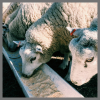
Acute ruminal acidosis (ARA) is a detrimental metabolic digestive disorder in ruminants, triggered by sudden intake of high-concentrate diets such as corn and wheat flour. This condition leads to a sharp drop in rumen pH and excessive accumulation of fermentation products like L-lactic acid, D-lactic acid, and lipopolysaccharides (LPS), which can enter the bloodstream.
Read more
-

Oct
30
Washington Roundup – October 2025

Congress remains at an impasse regarding reopening the federal government. The House of Representatives passed a continuing resolution that would keep the government funded through November 21st. Since that time, the Senate has failed to pass the continuing resolution, failing on largely party line votes each time it has been considered.
Read more
-

Oct
23
Interpretive Summary: Seeking interdisciplinary solutions at the interface of animal, human, plant, and environmental health

Human beings have interacted with flora and fauna in their shared environment throughout history. These relationships—necessary for food, shelter, and companionship—reflect a deep connection with both living and nonliving elements in our world. Societal progress, however, has altered our interactions with animals, plants, and the environment.
Read more
-

Oct
23
Interpretive Summary: The One Health approach: reinventing our past knowledge to provide a sustainable future

For centuries, native and indigenous populations around the globe interacted with their surroundings as part of their daily live routines to hunt and harvest for nourishment, to celebrate, and to survive. They understood that their actions had major consequences on crops, animals, rivers, and forests.
Read more
-

Oct
23
Interpretive Summary: An animal interest approach method as a gateway to a one health educated pipeline
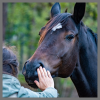
Animal science is the study of the biology, care, and management of animals, focusing on their health, behavior, nutrition, physiology, and breeding. Animal science has a critical role in One Health, which emphasizes the interconnectedness of human, animal, plant, and environmental health. In this context, animal science helps ensure the well-being of livestock, pets, and wildlife, the maintenance of a safe food supply, and the reduction of zoonotic disease outbreaks, while contributing to environmental sustainability.
Read more
-

Oct
23
Interpretive Summary: Cow milk production, consumption, marketing, and food safety constraints in Ethiopia: a systematic review

In 2023, approximately 48.6 million children aged 0 to 14 lived in Ethiopia (UNICEF Ethiopia Annual Report, 2023). While Ethiopia produces about 12 billion liters of milk annually (Ministry of Agriculture, 2025), this is insufficient to meet the World Health Organization’s (WHO’s) recommendation of 200 kg dairy per person per year, requiring over 9.7 billion liters annually just for children. The current intake is only 11% of this target (Farrell, 2021).
Read more
-

Oct
23
Interpretive Summary: A role for zinc in the mitigation of zoonotic disease attributable to RNA viruses—a review with application to One Health perspective
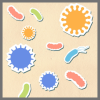
The concept of One Health may be associated with many diverse interpretations in both scope and practice as viewed from a particular frame of reference or perspective. From a general perspective of human and veterinary medicine, One Health is based on the general premise that human and veterinary medicine are connected at multiple levels, with environmental and socioeconomic factors often providing a common denominator.
Read more
-

Oct
16
Interpretive Summary: Effects of Saccharomyces cerevisiae fermentation-derived postbiotic on methane production and plasma metabolome of fattening Holstein steers fed a high-grain diet
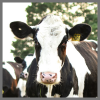
Saccharomyces cerevisiae fermentation-derived postbiotic (SCFP) has been shown to increase ruminal pH of cattle fed a high-concentrate diet. Increased ruminal pH has been linked to increased methane emissions. Some studies have suggested that SCFP can reduce methane emissions by improving feed efficiency.
Read more
-

Oct
16
Interpretive Summary: Modeling improvements in digestible amino acids by a consensus bacterial 6-phytase variant in grower pigs
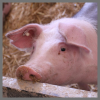
Phytase is added to pig diets to improve P digestibility but may also improve amino acid (AA) digestibility. Data from experiments evaluating the dose–response effect of a phytase are used to determine AA “matrix” values, i.e., the amount by which the diet may be reduced in AA due to the expected contribution of the phytase.
Read more
-

Oct
16
Interpretive Summary: Serum metabolomics reveals one-carbon metabolism differences between lean and obese cats not affected by L-carnitine or choline supplementation

Obesity in cats is a widespread issue that increases the risk of serious health conditions, including feline fatty liver disease. There has been interest in two micronutrients, choline and L-carnitine, for their potential to support liver health in cats, particularly in those that are obese. In the present study, 18 cats (nine lean and nine obese) were fed a commercial dry food supplemented with either choline, L-carnitine, or no supplement for 6 wk.
Read more
-

Oct
16
Interpretive Summary: Semi-synthetic reference diets containing crystalline amino acids at 120% of recommendations for adult dogs are not appropriate for estimating the protein quality of ingredients used in extruded diets

Metabolic availability (MA) of an amino acid (AA) is the fraction of a dietary AA that is digestible and available for protein synthesis. Chicken meal (ChM) and peas are commonly used protein sources in extruded dog foods, with peas containing more fiber. Moreover, the essential AA methionine (Met) is first limiting in peas.
Read more
-

Oct
16
Interpretive Summary: Conductive cooling and Moringa oleifera supplementation of heat stressed sows during late gestation and lactation alters the cheek cell lipidome of neonatal pigs
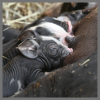
High environmental temperatures detrimentally affect the productive performance and welfare of lactating sows. Reduced litter growth is linked to decreased sow milk production, but there may be other factors related to maternal heat stress that impact neonate development. For example, heat stress can increase the risk for lipid damage.
Read more
 NovInterpretive Summary: Assessment of dietary spirulina supplementation on growth performance, nutrient digestibility, and intestinal health in lipopolysaccharide-challenged weanling pigs
NovInterpretive Summary: Assessment of dietary spirulina supplementation on growth performance, nutrient digestibility, and intestinal health in lipopolysaccharide-challenged weanling pigs Weanling pigs are highly susceptible to intestinal health challenges caused by harmful bacterial agents, which can trigger inflammation and weaken intestinal epithelial integrity. However, research on the potential benefits of dietary spirulina as a bioactive feed additive for improving gut health in weanling pigs remains limited.
Weanling pigs are highly susceptible to intestinal health challenges caused by harmful bacterial agents, which can trigger inflammation and weaken intestinal epithelial integrity. However, research on the potential benefits of dietary spirulina as a bioactive feed additive for improving gut health in weanling pigs remains limited. NovInterpretive Summary: Variability in cognitive strategies in a numerical discrimination task: individual and comparative insights from day-old domestic chicks (Gallus gallus)
NovInterpretive Summary: Variability in cognitive strategies in a numerical discrimination task: individual and comparative insights from day-old domestic chicks (Gallus gallus) Numerical abilities play a fundamental role in survival by enabling animals to assess resources and make adaptive decisions. Among these, numerical discrimination, the capability to distinguish between larger and smaller numerosities, is highly studied. Numerical discrimination can be solved using two strategies: the absolute, selecting a specific numerosity, or the relative, identifying the larger or smaller one.
Numerical abilities play a fundamental role in survival by enabling animals to assess resources and make adaptive decisions. Among these, numerical discrimination, the capability to distinguish between larger and smaller numerosities, is highly studied. Numerical discrimination can be solved using two strategies: the absolute, selecting a specific numerosity, or the relative, identifying the larger or smaller one. NovInterpretive Summary: Genomic study for pregnancy loss in Brahman cattle
NovInterpretive Summary: Genomic study for pregnancy loss in Brahman cattle Pregnancy loss (PL) is a major contributor to reproductive inefficiency in beef cattle operations and carries significant economic implications for producers. Although management and environmental factors are known to influence pregnancy maintenance, the genetic factors contributing to PL remain poorly understood, particularly in Bos indicus-influenced breeds.
Pregnancy loss (PL) is a major contributor to reproductive inefficiency in beef cattle operations and carries significant economic implications for producers. Although management and environmental factors are known to influence pregnancy maintenance, the genetic factors contributing to PL remain poorly understood, particularly in Bos indicus-influenced breeds. NovInterpretive Summary: Impact of dietary supplementation of beef cows with rumen-protected methionine during the periconceptional period on post-weaning performance of female offspring
NovInterpretive Summary: Impact of dietary supplementation of beef cows with rumen-protected methionine during the periconceptional period on post-weaning performance of female offspring This study examined the effects of supplementing rumen-protected methionine (RP-Met) during the periconceptional period on post-weaning traits of female offspring. A total of 114 beef cows were randomly assigned to a control (CON; no RP-Met) and RP-Met treatment.
This study examined the effects of supplementing rumen-protected methionine (RP-Met) during the periconceptional period on post-weaning traits of female offspring. A total of 114 beef cows were randomly assigned to a control (CON; no RP-Met) and RP-Met treatment. NovInterpretive Summary: Optimizing the performance of large genomic evaluations through data truncation in Angus cattle
NovInterpretive Summary: Optimizing the performance of large genomic evaluations through data truncation in Angus cattle Recent advances in animal breeding and genetics have made it possible to combine records, genotypes, and pedigree into a single input for predicting breeding values, making genomic evaluations easier and more efficient. However, large genomic models remain computationally expensive.
Recent advances in animal breeding and genetics have made it possible to combine records, genotypes, and pedigree into a single input for predicting breeding values, making genomic evaluations easier and more efficient. However, large genomic models remain computationally expensive. NovInterpretive Summary: The effect of Methylococcus capsulatus in mono- or co-culture with Methanobrevibacter smithii or with mixed rumen fluid on bacterial growth and methane gas production
NovInterpretive Summary: The effect of Methylococcus capsulatus in mono- or co-culture with Methanobrevibacter smithii or with mixed rumen fluid on bacterial growth and methane gas production This study investigated the impact of Methylococcus capsulatus, mixed with or without purified bacterial strains or mixed rumen fluid, on feeding grass-based and/or grain-based diet rations, as well as changes in bacterial cells, rumen fermentation rates, gas production, and rumen microbiota in in vitro and continuous culture. Three experiments were carried out using in vitro ANKUM gas production systems (Exp. 1 and 2) and continuous recirculating flux chamber systems (Exp. 3).
This study investigated the impact of Methylococcus capsulatus, mixed with or without purified bacterial strains or mixed rumen fluid, on feeding grass-based and/or grain-based diet rations, as well as changes in bacterial cells, rumen fermentation rates, gas production, and rumen microbiota in in vitro and continuous culture. Three experiments were carried out using in vitro ANKUM gas production systems (Exp. 1 and 2) and continuous recirculating flux chamber systems (Exp. 3). NovInterpretive Summary: Effects of Spray-Dried Plasma on Nutrient Digestibility, Fecal Metabolites, Microbiota, and Immune and Inflammatory Biomarkers in Adult Dogs
NovInterpretive Summary: Effects of Spray-Dried Plasma on Nutrient Digestibility, Fecal Metabolites, Microbiota, and Immune and Inflammatory Biomarkers in Adult Dogs This study evaluated the effects of incorporating spray-dried porcine plasma (SDP) into extruded dog diets. Spray-dried plasma is a functional protein ingredient rich in bioactive compounds that may support digestion, gut health, and immune function.
This study evaluated the effects of incorporating spray-dried porcine plasma (SDP) into extruded dog diets. Spray-dried plasma is a functional protein ingredient rich in bioactive compounds that may support digestion, gut health, and immune function. NovInterpretive Summary: Digestibility and Palatability of Extruded Dog Food with Aspergillus oryzae Fermented Soybean Meal and its Influence on Colonic Fermentation Indicators
NovInterpretive Summary: Digestibility and Palatability of Extruded Dog Food with Aspergillus oryzae Fermented Soybean Meal and its Influence on Colonic Fermentation Indicators The utilization of traditional soybean meal in pet food has been limited by its low methionine content and flatulence-causing oligosaccharides. Microbially enhanced soybean protein and Aspergillus oryzae fermented soybean meal (F-SBM) are bioprocessed soybean meal products with potentially improved nutritional value.
The utilization of traditional soybean meal in pet food has been limited by its low methionine content and flatulence-causing oligosaccharides. Microbially enhanced soybean protein and Aspergillus oryzae fermented soybean meal (F-SBM) are bioprocessed soybean meal products with potentially improved nutritional value. NovInterpretive Summary: Both elevated lipopolysaccharide and D-lactic acid concentrations in blood contribute to systemic inflammation in acute ruminal acidosis
NovInterpretive Summary: Both elevated lipopolysaccharide and D-lactic acid concentrations in blood contribute to systemic inflammation in acute ruminal acidosis Acute ruminal acidosis (ARA) is a detrimental metabolic digestive disorder in ruminants, triggered by sudden intake of high-concentrate diets such as corn and wheat flour. This condition leads to a sharp drop in rumen pH and excessive accumulation of fermentation products like L-lactic acid, D-lactic acid, and lipopolysaccharides (LPS), which can enter the bloodstream.
Acute ruminal acidosis (ARA) is a detrimental metabolic digestive disorder in ruminants, triggered by sudden intake of high-concentrate diets such as corn and wheat flour. This condition leads to a sharp drop in rumen pH and excessive accumulation of fermentation products like L-lactic acid, D-lactic acid, and lipopolysaccharides (LPS), which can enter the bloodstream. OctWashington Roundup – October 2025
OctWashington Roundup – October 2025 Congress remains at an impasse regarding reopening the federal government. The House of Representatives passed a continuing resolution that would keep the government funded through November 21st. Since that time, the Senate has failed to pass the continuing resolution, failing on largely party line votes each time it has been considered.
Congress remains at an impasse regarding reopening the federal government. The House of Representatives passed a continuing resolution that would keep the government funded through November 21st. Since that time, the Senate has failed to pass the continuing resolution, failing on largely party line votes each time it has been considered. OctInterpretive Summary: Seeking interdisciplinary solutions at the interface of animal, human, plant, and environmental health
OctInterpretive Summary: Seeking interdisciplinary solutions at the interface of animal, human, plant, and environmental health Human beings have interacted with flora and fauna in their shared environment throughout history. These relationships—necessary for food, shelter, and companionship—reflect a deep connection with both living and nonliving elements in our world. Societal progress, however, has altered our interactions with animals, plants, and the environment.
Human beings have interacted with flora and fauna in their shared environment throughout history. These relationships—necessary for food, shelter, and companionship—reflect a deep connection with both living and nonliving elements in our world. Societal progress, however, has altered our interactions with animals, plants, and the environment. OctInterpretive Summary: The One Health approach: reinventing our past knowledge to provide a sustainable future
OctInterpretive Summary: The One Health approach: reinventing our past knowledge to provide a sustainable future For centuries, native and indigenous populations around the globe interacted with their surroundings as part of their daily live routines to hunt and harvest for nourishment, to celebrate, and to survive. They understood that their actions had major consequences on crops, animals, rivers, and forests.
For centuries, native and indigenous populations around the globe interacted with their surroundings as part of their daily live routines to hunt and harvest for nourishment, to celebrate, and to survive. They understood that their actions had major consequences on crops, animals, rivers, and forests. OctInterpretive Summary: An animal interest approach method as a gateway to a one health educated pipeline
OctInterpretive Summary: An animal interest approach method as a gateway to a one health educated pipeline Animal science is the study of the biology, care, and management of animals, focusing on their health, behavior, nutrition, physiology, and breeding. Animal science has a critical role in One Health, which emphasizes the interconnectedness of human, animal, plant, and environmental health. In this context, animal science helps ensure the well-being of livestock, pets, and wildlife, the maintenance of a safe food supply, and the reduction of zoonotic disease outbreaks, while contributing to environmental sustainability.
Animal science is the study of the biology, care, and management of animals, focusing on their health, behavior, nutrition, physiology, and breeding. Animal science has a critical role in One Health, which emphasizes the interconnectedness of human, animal, plant, and environmental health. In this context, animal science helps ensure the well-being of livestock, pets, and wildlife, the maintenance of a safe food supply, and the reduction of zoonotic disease outbreaks, while contributing to environmental sustainability. OctInterpretive Summary: Cow milk production, consumption, marketing, and food safety constraints in Ethiopia: a systematic review
OctInterpretive Summary: Cow milk production, consumption, marketing, and food safety constraints in Ethiopia: a systematic review In 2023, approximately 48.6 million children aged 0 to 14 lived in Ethiopia (UNICEF Ethiopia Annual Report, 2023). While Ethiopia produces about 12 billion liters of milk annually (Ministry of Agriculture, 2025), this is insufficient to meet the World Health Organization’s (WHO’s) recommendation of 200 kg dairy per person per year, requiring over 9.7 billion liters annually just for children. The current intake is only 11% of this target (Farrell, 2021).
In 2023, approximately 48.6 million children aged 0 to 14 lived in Ethiopia (UNICEF Ethiopia Annual Report, 2023). While Ethiopia produces about 12 billion liters of milk annually (Ministry of Agriculture, 2025), this is insufficient to meet the World Health Organization’s (WHO’s) recommendation of 200 kg dairy per person per year, requiring over 9.7 billion liters annually just for children. The current intake is only 11% of this target (Farrell, 2021). OctInterpretive Summary: A role for zinc in the mitigation of zoonotic disease attributable to RNA viruses—a review with application to One Health perspective
OctInterpretive Summary: A role for zinc in the mitigation of zoonotic disease attributable to RNA viruses—a review with application to One Health perspective The concept of One Health may be associated with many diverse interpretations in both scope and practice as viewed from a particular frame of reference or perspective. From a general perspective of human and veterinary medicine, One Health is based on the general premise that human and veterinary medicine are connected at multiple levels, with environmental and socioeconomic factors often providing a common denominator.
The concept of One Health may be associated with many diverse interpretations in both scope and practice as viewed from a particular frame of reference or perspective. From a general perspective of human and veterinary medicine, One Health is based on the general premise that human and veterinary medicine are connected at multiple levels, with environmental and socioeconomic factors often providing a common denominator. OctInterpretive Summary: Effects of Saccharomyces cerevisiae fermentation-derived postbiotic on methane production and plasma metabolome of fattening Holstein steers fed a high-grain diet
OctInterpretive Summary: Effects of Saccharomyces cerevisiae fermentation-derived postbiotic on methane production and plasma metabolome of fattening Holstein steers fed a high-grain diet Saccharomyces cerevisiae fermentation-derived postbiotic (SCFP) has been shown to increase ruminal pH of cattle fed a high-concentrate diet. Increased ruminal pH has been linked to increased methane emissions. Some studies have suggested that SCFP can reduce methane emissions by improving feed efficiency.
Saccharomyces cerevisiae fermentation-derived postbiotic (SCFP) has been shown to increase ruminal pH of cattle fed a high-concentrate diet. Increased ruminal pH has been linked to increased methane emissions. Some studies have suggested that SCFP can reduce methane emissions by improving feed efficiency. OctInterpretive Summary: Modeling improvements in digestible amino acids by a consensus bacterial 6-phytase variant in grower pigs
OctInterpretive Summary: Modeling improvements in digestible amino acids by a consensus bacterial 6-phytase variant in grower pigs Phytase is added to pig diets to improve P digestibility but may also improve amino acid (AA) digestibility. Data from experiments evaluating the dose–response effect of a phytase are used to determine AA “matrix” values, i.e., the amount by which the diet may be reduced in AA due to the expected contribution of the phytase.
Phytase is added to pig diets to improve P digestibility but may also improve amino acid (AA) digestibility. Data from experiments evaluating the dose–response effect of a phytase are used to determine AA “matrix” values, i.e., the amount by which the diet may be reduced in AA due to the expected contribution of the phytase. OctInterpretive Summary: Serum metabolomics reveals one-carbon metabolism differences between lean and obese cats not affected by L-carnitine or choline supplementation
OctInterpretive Summary: Serum metabolomics reveals one-carbon metabolism differences between lean and obese cats not affected by L-carnitine or choline supplementation Obesity in cats is a widespread issue that increases the risk of serious health conditions, including feline fatty liver disease. There has been interest in two micronutrients, choline and L-carnitine, for their potential to support liver health in cats, particularly in those that are obese. In the present study, 18 cats (nine lean and nine obese) were fed a commercial dry food supplemented with either choline, L-carnitine, or no supplement for 6 wk.
Obesity in cats is a widespread issue that increases the risk of serious health conditions, including feline fatty liver disease. There has been interest in two micronutrients, choline and L-carnitine, for their potential to support liver health in cats, particularly in those that are obese. In the present study, 18 cats (nine lean and nine obese) were fed a commercial dry food supplemented with either choline, L-carnitine, or no supplement for 6 wk. OctInterpretive Summary: Semi-synthetic reference diets containing crystalline amino acids at 120% of recommendations for adult dogs are not appropriate for estimating the protein quality of ingredients used in extruded diets
OctInterpretive Summary: Semi-synthetic reference diets containing crystalline amino acids at 120% of recommendations for adult dogs are not appropriate for estimating the protein quality of ingredients used in extruded diets Metabolic availability (MA) of an amino acid (AA) is the fraction of a dietary AA that is digestible and available for protein synthesis. Chicken meal (ChM) and peas are commonly used protein sources in extruded dog foods, with peas containing more fiber. Moreover, the essential AA methionine (Met) is first limiting in peas.
Metabolic availability (MA) of an amino acid (AA) is the fraction of a dietary AA that is digestible and available for protein synthesis. Chicken meal (ChM) and peas are commonly used protein sources in extruded dog foods, with peas containing more fiber. Moreover, the essential AA methionine (Met) is first limiting in peas. OctInterpretive Summary: Conductive cooling and Moringa oleifera supplementation of heat stressed sows during late gestation and lactation alters the cheek cell lipidome of neonatal pigs
OctInterpretive Summary: Conductive cooling and Moringa oleifera supplementation of heat stressed sows during late gestation and lactation alters the cheek cell lipidome of neonatal pigs High environmental temperatures detrimentally affect the productive performance and welfare of lactating sows. Reduced litter growth is linked to decreased sow milk production, but there may be other factors related to maternal heat stress that impact neonate development. For example, heat stress can increase the risk for lipid damage.
High environmental temperatures detrimentally affect the productive performance and welfare of lactating sows. Reduced litter growth is linked to decreased sow milk production, but there may be other factors related to maternal heat stress that impact neonate development. For example, heat stress can increase the risk for lipid damage.



